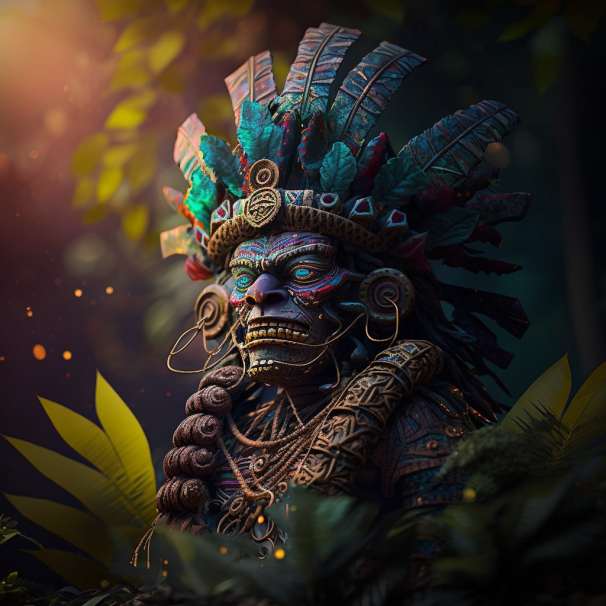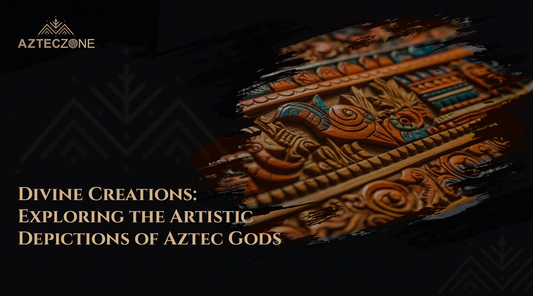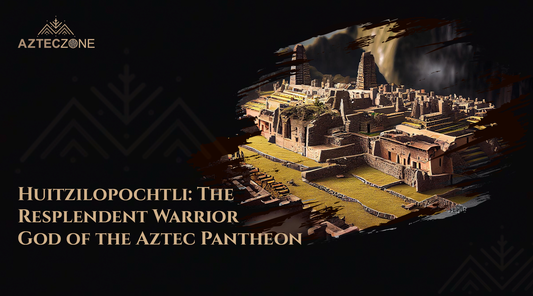Delving into the Legends, Symbolism, and Cultural Impact of the Enigmatic Aztec Deity
Quetzalcoatl, the Feathered Serpent, is one of the most well-known and revered gods in Mesoamerican mythology. As a central figure in Aztec religion and culture, Quetzalcoatl's influence spanned multiple civilizations throughout ancient Mexico and Central America. This article explores the legends, symbolism, and cultural impact of Quetzalcoatl, offering a comprehensive insight into the rich mythology surrounding this enigmatic deity.
The Mythology of Quetzalcoatl
The Feathered Serpent
Quetzalcoatl, whose name means "Feathered Serpent" or "Plumed Serpent" in the Nahuatl language, was a prominent deity in Mesoamerican mythology. Often depicted as a snake adorned with feathers or a combination of snake and bird-like features, Quetzalcoatl represented a fusion of the earth and sky, embodying the duality of nature.
Creator God and Patron of Knowledge
Quetzalcoatl was associated with various aspects of life, including creation, knowledge, and fertility. In some myths, he was credited with the creation of humanity, the earth, and the heavens, as well as the invention of writing and the calendar. As the patron of knowledge and learning, Quetzalcoatl was also linked to the arts, sciences, and agriculture.
Myths and Legends
Numerous myths and legends surround Quetzalcoatl, often highlighting his role as a benevolent god and teacher. One well-known story recounts his journey to the underworld to retrieve the bones of the dead, which he used to create the first humans. In another tale, Quetzalcoatl is tricked by the god Tezcatlipoca into becoming intoxicated and committing various transgressions, leading to his eventual exile and the promise of his eventual return.
Quetzalcoatl in Mesoamerican Religious Practices
Ceremonies and Rituals
Quetzalcoatl was venerated in various ceremonies and rituals throughout Mesoamerica. These rites often included offerings of incense, food, and other items, as well as music, dancing, and recitations of sacred texts. In some cases, human sacrifices were also performed in honor of Quetzalcoatl, although these were generally less common than those dedicated to other gods.
Temples and Monuments
Temples and monuments dedicated to Quetzalcoatl were found across Mesoamerica, from the massive Temple of the Feathered Serpent in Teotihuacan to the iconic El Castillo pyramid in Chichen Itza. These structures were often adorned with intricate carvings and sculptures depicting Quetzalcoatl in his various forms and manifestations, serving as both religious and cultural centers for the ancient civilizations that built them.
The Cultural Significance of Quetzalcoatl
The Toltec Connection
Quetzalcoatl's prominence in Mesoamerican mythology can be traced back to the Toltec civilization, which existed in central Mexico from the 10th to the 12th centuries. The Toltecs revered Quetzalcoatl as both a god and a legendary ruler, whose reign was marked by a golden age of peace, prosperity, and artistic achievement. This association with the Toltecs would later influence the Aztec civilization, which saw itself as the inheritors of the Toltec legacy.
The Spanish Conquest and the Legend of Quetzalcoatl's Return
The legend of Quetzalcoatl's return played a significant role in the Spanish conquest of the Aztec Empire. According to the prophecy, Quetzalcoatl would return from exile to reclaim his position as ruler and restore the ancient wisdom he had imparted to the people. When the Spanish conquistadors, led by Hernán Cortés, arrived in Mexico in 1519, some Aztecs believed that their arrival fulfilled the prophecy of Quetzalcoatl's return. This belief, combined with political and military factors, contributed to the eventual fall of the Aztec Empire.
Quetzalcoatl's Enduring Legacy
Quetzalcoatl remains an enduring figure in modern Mexican culture and a symbol of the country's pre-Hispanic heritage. His image and mythology continue to inspire contemporary art, literature, and even popular culture, serving as a reminder of the rich and complex history of Mesoamerican civilizations. In addition, the archaeological sites and monuments dedicated to Quetzalcoatl continue to attract visitors from around the world, offering a fascinating glimpse into the religious and cultural practices of the ancient peoples who once venerated this enigmatic deity.
The Symbolism of Quetzalcoatl
The Duality of Nature
Quetzalcoatl's dual nature, as both a serpent and a bird, represents the interconnectedness of the earth and sky. The serpent symbolizes the earth and its life-giving powers, while the feathers represent the celestial realm and the divine. This duality reflects the ancient Mesoamerican worldview, which emphasized the importance of balance and harmony between the forces of nature.
The Cycle of Life and Death
As a creator god, Quetzalcoatl was also associated with the cycle of life and death. His role in the creation of humanity and his journey to the underworld to retrieve the bones of the dead underscore this connection, highlighting the cyclical nature of existence and the concept of regeneration and renewal.
The Pursuit of Knowledge
Quetzalcoatl's status as the patron of knowledge and learning underscores the value placed on wisdom and intellectual pursuits in Mesoamerican culture. His association with the arts, sciences, and agriculture reflects the importance of these disciplines in the daily lives of the ancient people and the belief that they were divinely inspired.
Quetzalcoatl, the Feathered Serpent, is a captivating figure in Mesoamerican mythology, embodying the duality of nature, the cycle of life and death, and the pursuit of knowledge. As a central figure in the religious and cultural practices of ancient civilizations such as the Toltecs and the Aztecs, Quetzalcoatl's influence continues to resonate in modern Mexican culture, art, and history. By delving into the legends, symbolism, and cultural impact of this enigmatic deity, we gain a deeper understanding of the rich mythology and worldview of the Mesoamerican peoples, as well as their enduring legacy in the world today.




